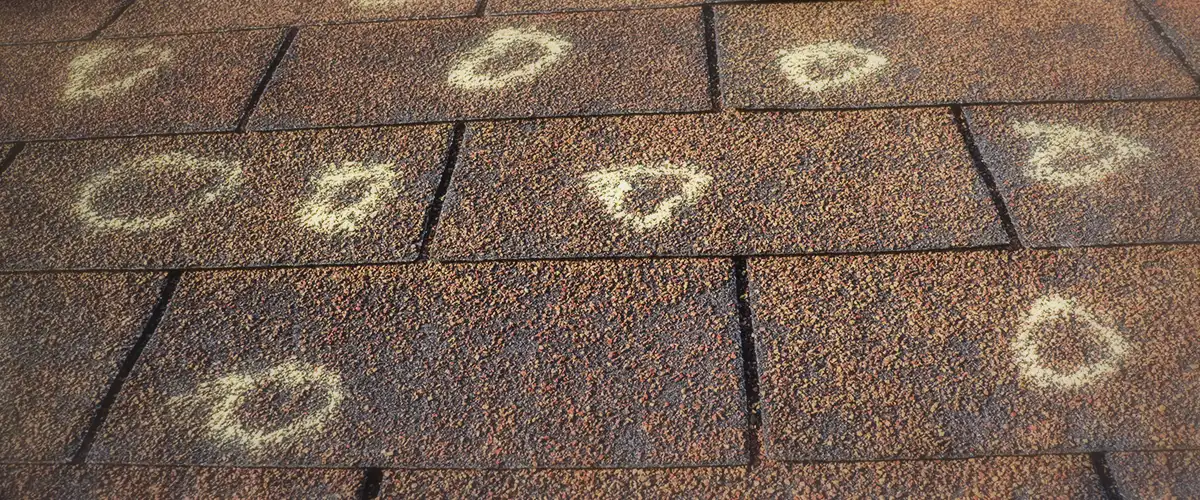

The roofing industry is filled with misconceptions, often leading homeowners and commercial property managers to make costly or inefficient decisions. These misconceptions may influence decisions about installation, upkeep, repair, and material selection. The following gives property owners clarity and the ability to make well-informed decisions regarding their roofs by helping them distinguish fact from fiction.
The facts: Roofing systems vary significantly in terms of materials, durability, cost, and design.
Residential and commercial roofs differ fundamentally. Residential roofs are typically sloped and made from asphalt shingles, wood, tile, or metal, focusing on aesthetic appeal and moderate durability. Commercial roofs, on the other hand, are often flat and constructed with materials like TPO, EPDM, or modified bitumen to accommodate HVAC units and other rooftop equipment.
Even within these categories, decisions are influenced by budget, building size, and climate. Knowing these distinctions guarantees that the roof fits the environment and function for which it was designed.
The facts: Even the most durable roofs require regular upkeep to maintain their lifespan.
New roofs are not maintenance-free. The durability of roofing materials can be weakened over time by weather, debris buildup, and UV ray wear. Major repairs later on can be avoided with annual inspections, gutter cleaning, and early resolution of minor problems.
Proactive steps like applying reflective coatings and using infrared scanning to find leaks can help commercial roofs last longer while using less energy.
The facts: Waiting for visible signs of damage can lead to costly repairs.
Leaks are frequently an advanced sign of roofing problems. For months, issues like loose shingles, small cracks, or broken flashing may go unnoticed, leading to insulation issues, mold growth, or hidden structural damage.
For early detection, routine inspections are essential, particularly following severe weather. A professional roofing maintenance plan can help commercial properties reduce risks and guarantee optimal roof performance.
The facts: Modern flat roofing systems are designed for durability and water resistance.
Flat roofs have come a long way with advancements in materials like TPO, PVC, and EPDM. Proper installation, adequate drainage systems, and periodic maintenance ensure these roofs remain leak-free for decades.
Commercial property owners benefit from the flat roof's ability to accommodate solar panels, HVAC units, and green roofing systems, proving that with the right care, flat roofs are highly functional and reliable.
The facts: Roofing requires professional expertise to ensure safety, quality, and compliance.
While DIY projects may seem budget-friendly, roofing is not a task to be tackled without proper training and tools. Improper installations can void warranties, lead to safety hazards, and result in subpar performance.
Residential homeowners risk personal injury and long-term costs from improper roof repairs. Commercial roofs, due to their complexity, demand professional contractors to ensure compliance with building codes and warranty terms.
The facts: Advances in roofing materials have mitigated heat absorption.
While dark-colored roofs traditionally absorbed more heat, modern materials include reflective coatings and thermal insulation to combat this issue. Cool roofing technologies, available in both dark and light shades, reflect more sunlight and reduce heat transfer into the building.
This myth no longer holds true, making color selection more about aesthetics and less about temperature concerns.
The facts: Early roof replacement can save costs in the long term.
Waiting until a roof fails entirely can result in extensive damage to the underlying structure and interior spaces. Signs like curling shingles, sagging areas, or water stains indicate that replacement may be a more cost-effective option than repeated repairs.
For commercial roofs, timely replacement with energy-efficient systems can also reduce utility bills and qualify for green building incentives.
The facts: Warranties are limited and often misunderstood.
Roofing warranties typically cover manufacturing defects or contractor errors but may exclude damage from natural disasters, improper maintenance, or normal wear and tear.
Property owners should carefully review warranty terms and ensure compliance with maintenance requirements to avoid voiding coverage. Regular inspections and keeping detailed records of repairs can also strengthen warranty claims if needed.
The facts: Roofing contractors vary widely in expertise, certifications, and quality of service.
Choosing the correct contractor is essential. Reputable contractors have good customer reviews, are licensed and insured, and offer warranties. Seek out manufacturer certifications that attest to specific training and product knowledge, such as GAF certification.
To guarantee a successful installation for commercial projects, contractors with knowledge of large-scale systems and energy-efficient designs are crucial.
The facts: Roofing significantly impacts property value, energy costs, and aesthetics.
A well-designed roof enhances curb appeal, improves energy efficiency, and protects the building’s structure. For residential properties, an upgraded roof can boost resale value. For commercial properties, investing in advanced roofing technologies like solar-integrated systems offers long-term cost savings and sustainability benefits.
Misconceptions about roofing can lead to poor decisions, unnecessary expenses, and missed opportunities for improvement. By understanding the realities behind these common myths, property owners can make informed choices that enhance the durability, efficiency, and value of their roofs. Whether for a residential home or a commercial facility, investing in the right roofing solutions pays off in the long run.
Reach out to a trusted roofing professional like AKVM for a free, in-person inspection to determine your exact needs.

Choosing A Multi-residential Roofer
Choosing The Best Roofer
Energy Efficient Roofing Solutions
How Long Does It Take To Replace A Roof?
Debunking 10 Common Roofing Myths
2025 Roofing Tech & Trends
How To Choose Color For Tile Roof
What Is Drip Edge?
What Do Roof Vents & Penetrations Do?
How Roofs Impact Market Value
Best Roof for Florida
Maximizing Energy Efficiency
Roof Inspections 2024
Prepare Your Roof For Spring
Lifespan of Different Roofing Materials
How Roof Type Affects Value
Choosing Materials for Extreme Weather
Guide to Cleaning Gutters Safely
Emergency Roof Repair: What to do until the professionals arrive
New Roof Tech: GAF Solar Energy Shingles
How to Minimize Fire Hazards on Roof
How Florida Heat Affects Roof
Top Benefits of Shingle Roofs
Solar Options for Florida Homes
What to do if Hurricane Damages Roof
2023 Hurricane Season Roof Preparation Checklist
Does Adding Solar Increase Your Home's Value?
What it takes to be a GAF Master Elite Contractor
How To Choose The Right Roof Shingles
How To Choose The Right Windows & Doors For Your Home
How To Choose Solar Energy System For Your Home
What To Do If Tree Falls On Your Roof
Residential Roof Spring Cleaning Checklist
Should You Replace Your Gutters When You Replace Your Roof?
New Homeowners' Guide To Roof
Roof Warranties
2023 Solar Energy Trends
Time To Replace Front Door
Roofs With Curb Appeal
Roof is Leaking During Storm
New Roof vs. Repair